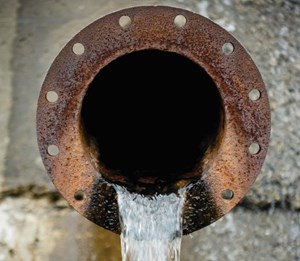Minnesota governor unveils $119 million water infrastructure investment in 2024 infrastructure plan
(UI) — In a groundbreaking move aimed at safeguarding the health and safety of Minnesotans, Governor Tim Walz revealed a comprehensive $119 million investment in water infrastructure as part of the Governor and Lieutenant Governor’s 2024 Infrastructure Plan.
The plan, totaling $982 million, underscores a commitment to addressing critical issues related to water systems without compromising on public safety.
Governor Walz emphasized the importance of prioritizing access to clean water, stating, “The investments in our 2024 Infrastructure Plan are investments in the wellbeing and future of Minnesota. We have an obligation to ensure every Minnesotan has access to clean water, well-maintained infrastructure, safe communities, and state buildings that are safe and accessible.”
The water-focused segment of the plan allocates over $119 million to support grants and low-interest loans, specifically targeting initiatives to maintain water cleanliness and replace lead pipes. Furthermore, a groundbreaking $28 million is earmarked to establish grant programs dedicated to eliminating contaminants such as PFAS from drinking water, addressing growing concerns over water quality.
In a move towards proactive monitoring, $2 million has been invested in developing a continuous nitrate monitoring network, showcasing the administration's commitment to staying ahead of potential water quality challenges.
Lieutenant Governor Flanagan echoed the sentiments, stating, “Infrastructure investments like those laid out in our plan are one critical way we ensure we’re making life easier for all Minnesotans.” The plan not only addresses immediate water quality concerns but also aligns with broader efforts to enhance the overall living conditions for the residents of Minnesota.
This substantial investment in water infrastructure is expected to not only fortify the state's commitment to environmental stewardship but also generate economic opportunities and employment through the creation of vital water-related projects across the state.
Related News
From Archive

- Glenfarne Alaska LNG targets late-2026 construction start for 807-mile pipeline project
- U.S. water reuse boom to fuel $47 billion in infrastructure spending through 2035
- $2.3 billion approved to construct 236-mile Texas-to-Gulf gas pipeline
- Major water pipe break in Puerto Rico hits over 165,000 customers
- Potomac River Tunnel project enters construction phase beneath Washington, D.C.
- Pennsylvania American Water launches interactive map to identify, replace lead water service lines
- Trump's tariffs drive $33 million cost increase for Cincinnati sewer project
- Utah city launches historic $70 million tunnel project using box jacking under active rail line
- Tulsa residents warned after sewer lines damaged by boring work
- Fatal trench collapse halts sewer construction in Massachusetts; two workers hospitalized




Comments